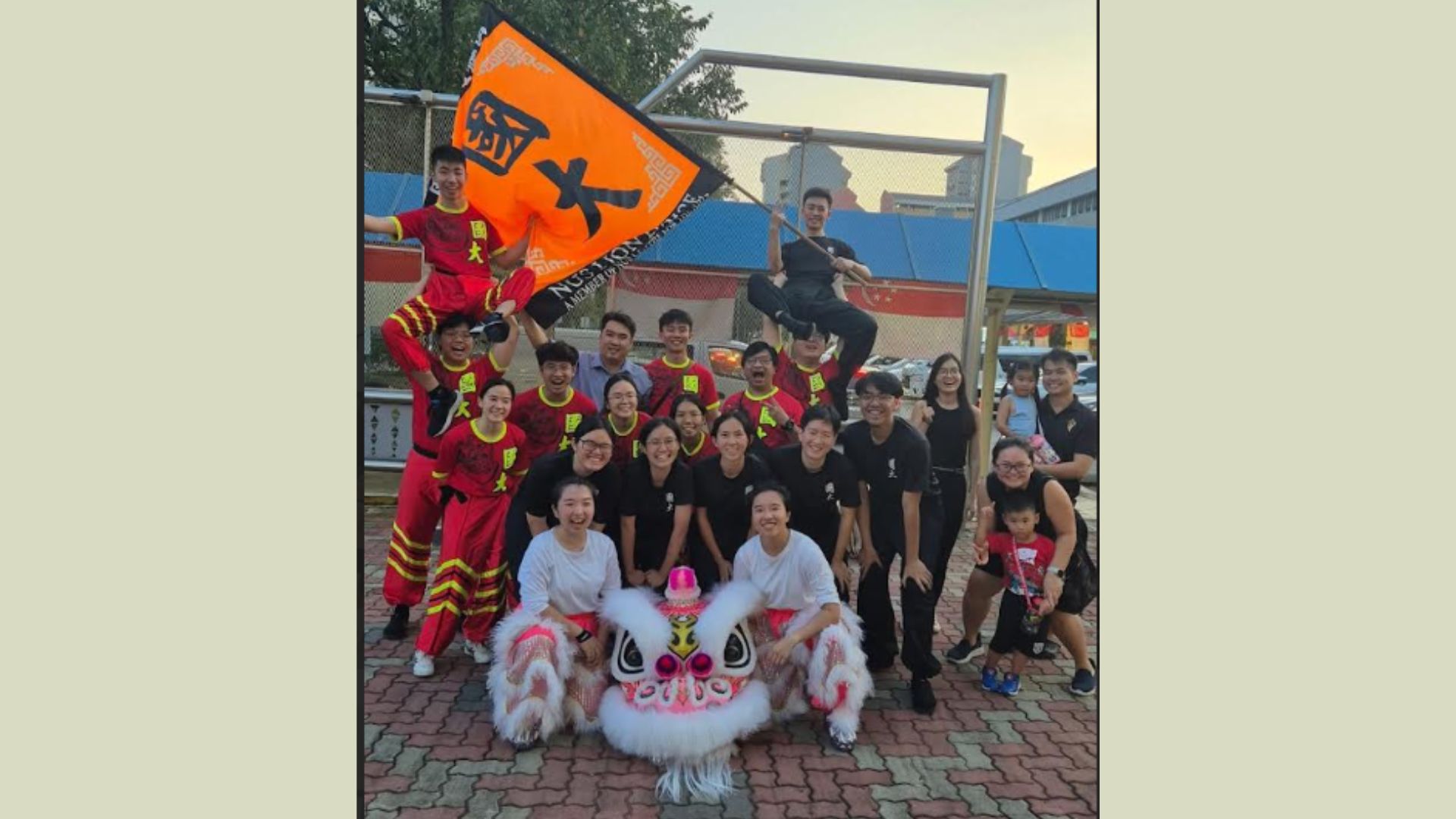Lion dance is an art form that is performed throughout the calendar year – on festive occasions such as Chinese New Year, and during a variety of community and social events ranging from temple festivities to housewarmings and birthday parties. It has similarly accompanied Mr Kelvin Teo, Executive with the NUS Office of Human Resources (OHR) team, through the seasons in his life.
More than 20 years ago, Kelvin was an undergraduate, juggling both his studies and his lion dance commitments. One of the pioneering alumni members of the NUS Lion Dance Troupe, he was pivotal in ensuring that the traditional Chinese art form continued to be passed down to his juniors. Before the COVID-19 period, he regularly attended training sessions to help teach students about lion dance, especially those with no prior background. To this day, he remains actively involved in the troupe as a mentor and coach to current students – he attends their sessions and dispenses tips on drumming and lion movement, especially when a competition is nearing.

Kelvin (third row, fifth from left) with the NUS Lion Dance Troupe in 2024.
Even as a young boy, Kelvin has always “danced” to the beat of his own drum. In primary school, he was enthralled by the vigorous drumbeats and movement coming from the nearby MacPherson Community Club. His classroom faced the venue, and he would watch the training sessions and performances of the troupe that was based there. Although his mother forbade him from joining the troupe, he managed to gather a few friends to participate alongside him, marking the start of a love affair with the art form that would stretch into the decades beyond.
In a lion dance troupe, members assume different roles: lion head, lion tail, drummer, cymbal and gong players. Driven by his passion for percussion, he grew up learning how to play the drum, gong and cymbals. Today, his usual role is the drummer in the troupe, the “heartbeat of the dance”: providing the rhythm that helps drive the lion’s movements, emotions and interaction with the audience.
In his role in NUS OHR Shared Services, Kelvin has been able to share his passion for the art form with his colleagues. Besides performing at major campus events such as the NUS120 Our Global Story event, he trained his colleagues to put up a performance at this year’s Chinese New Year celebrations, at then-Chief People Officer Mr Janson Yap’s suggestion for a short OHR team routine during the festivities. At once, Kelvin got to work, renting the necessary equipment and contributing his expertise during twice-a-week trainings for four months.

Kelvin (fourth from right) with the OHR Lion Dance team he coached, on the day of the performance at Duke-NUS Medical School.
Mr Kenneth Khoo, Senior Associate Director from NUS OHR, who was part of the OHR Lion Dance team, said: "Having never played drums of any kind prior to the try-outs, what started out as curiosity turned into terror when I was asked to be the drummer for the introduction segment. As I gradually understood the amount of practice and training needed for even a basic lion dance performance, my respect for lion dance troupes increased dramatically. The intricate movements and gestures required of those taking on the role of the lion, as well as the impeccable timing and drumbeats required at each stage of the performance, was astounding.”
“Fortunately, Kelvin was incredibly patient with us first-timers,” Kenneth said. “He regaled us with information on the background and history of lion dance. On the actual day of the performance, I believe we managed to pull off a decent show in full costume. This was a personal experience that will not be easily forgotten,” he added, thanking Kelvin and his supportive team members for their efforts.
As for Kelvin, the grind never stops – he is currently teaching a small group of teenagers the cultural essence of lion dance, ranging from its history and culture to the traditional method of percussion. While he aspires to continue passing on the art form to the next generation, his broader wish is for lion dance to be recognised as one of Singapore’s major Chinese traditional art forms.
“Ahead of Singapore, Malaysia and China have already collectively nominated lion dance as part of the United Nations Educational, Scientific and Cultural Organization (UNESCO) Representative List of the Intangible Cultural Heritage of Humanity. I hope that this art form will continue to grow in popularity and stature in this country,” he said.